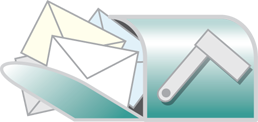Date: 30-Apr-2018
Category:
Retirement
It seems that as we near retirement, the amount of mail we get increases significantly. Not only are we the target market for everything from political to Medicare mailers, we’re also faced with a crazy amount of  financial statements on all of our retirement accounts. Something as simple as sorting through the mail at this point feels intimidating. And while some of that is simply unavoidable, there are ways we can streamline our retirement accounts to help us avoid all the mailers and paperwork that cause uneeded confusion and stress.
financial statements on all of our retirement accounts. Something as simple as sorting through the mail at this point feels intimidating. And while some of that is simply unavoidable, there are ways we can streamline our retirement accounts to help us avoid all the mailers and paperwork that cause uneeded confusion and stress.
Combine IRAs
Taxes can get tricky with this one, so we always recommend talking to a tax professional you trust in advance. With that said, it’s not a bad idea to find an IRA custodian with the lowest fees and move your accounts to that custodian. Traditional IRAs can be combined with Traditional IRAs, and the same rule applies to Roth IRAs. You can combine Traditional IRAs to Roth IRAs, but this is where that tax professional will come in handy, so make sure you talk to them first.
Combine Your 401(k)s
On a similar note, you can also combine your 401(k)s into your current account. It’s a great way to not only reduce the amount of mail (and therefore stress) you receive, you can also increase the dollar amount in your current 401(k). Take note, however of your current plan’s expenses and compare them to your old plan. If your current plan is more expensive, talk to a financial advisor on how best to proceed,
Roll your 401(k)s into an IRA
Believe it or not, you can roll over your previous 401(k)s to an IRA without a tax penalty. If you’re wanting to roll a 401(k) into a Roth IRA, talk to a tax professional to ensure a smooth transition. If you do decide to roll your 401(k) over, remember to do a direct rollover from plan sponsor to plan sponsor.
Maintaining a healthy body wei...
Uh oh! Have you missed your In...
Ready to take your health into...
The best way to protect yourse...
Medicare Advantage plans (also...